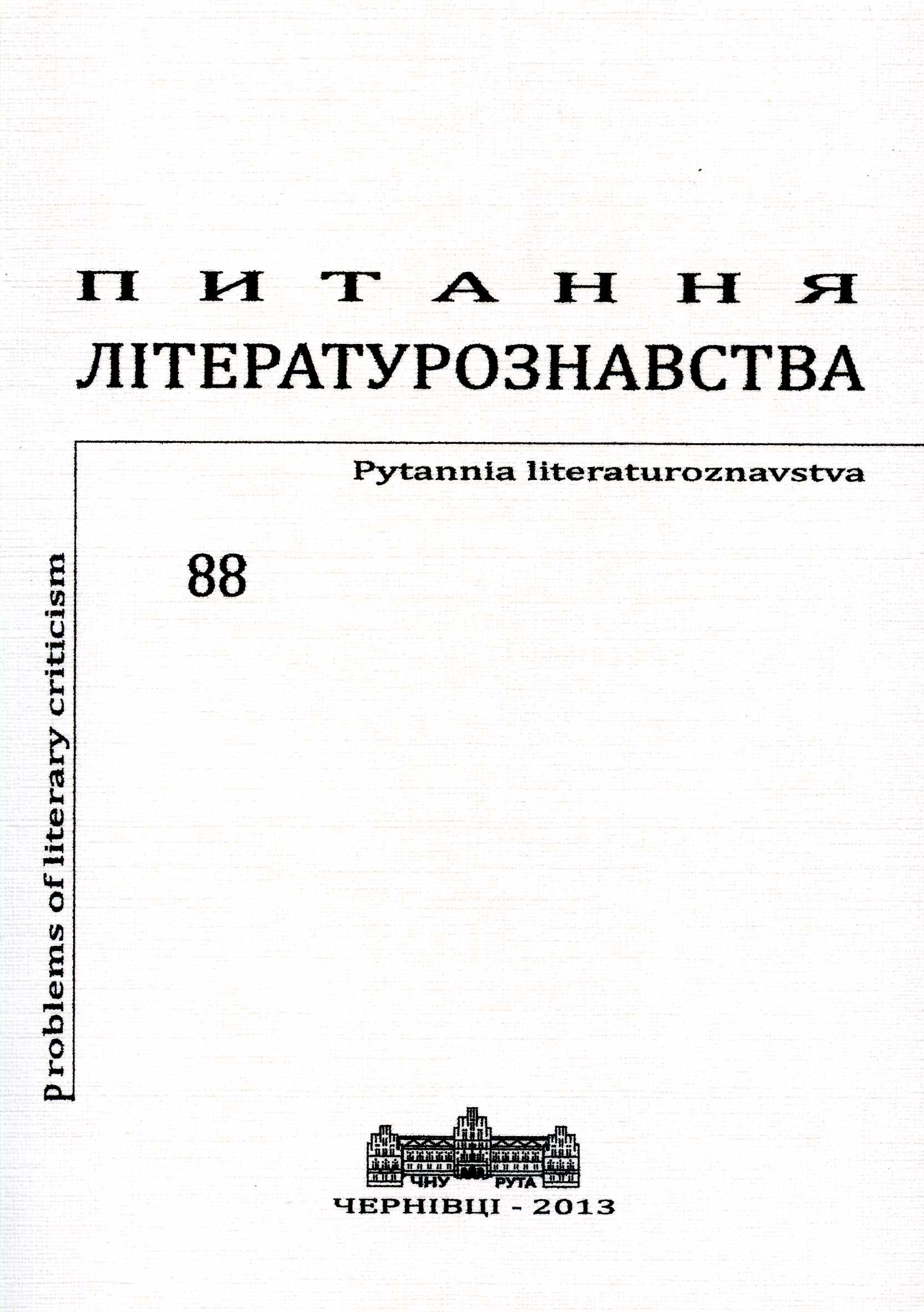Рецептивний потенціал сцени з воротарем у трагедії Вільяма Шекспіра “Макбет”
The Receptive Potential of the Porter’s Scene in William Shakespeare’s tragedy “Macbeth
Author(s): Halyna PastushukSubject(s): Language and Literature Studies, Studies of Literature, Theory of Literature, British Literature
Published by: Чернівецький національний університет імені Юрія Федьковича
Keywords: Shakespeare; reception; fool; mystery play; infernal scene; carnivalesque tradition;
Summary/Abstract: Text analysis of Act II Scene III in the well-known tragedy “Macbeth” by W. Shakespeare manifests hidden allusions on the mystery play “Harrowing of Hell” and its carnivalesque tradition of stage foolery. By means of acoustic and visual reconstruction of theatrical acting fixed in the text the author attempts to reveal the receptivity potential of the scene which, at first glance, seems to be irrelevant to the tragedy main plot line. The comism of the fragment contrasting with the preceding murder scene provides for a communicative distance between the protagonist and the spectator, i.e. it interprets Macbeth’s state into the mystery play discourse – on the one hand, and into the discourse of “low” humour – on the other. Behind the “lowered” helplessness of the Porter before alcohol and drunken state one can read tragic helplessness of Macbeth and his wife before the infatuation for power. Abundant visuality caused by the loud sound of knocking and Porter’s comment on it creates temporal ambivalence of the scene and provides opportunities for its multiple interpretation on different levels, the deepest of them being that of the infernal topos of “harrowing of hell”. The Porter that could have been played by a prominent Elizabethan fool (for instance Robert Armin) focuses on himself the point of intersection of various interpretative possibilities by playing with his simultaneously available for the spectator identities – “Globe” comic actor, Macbeth’s servant, mystery Devil, stage rustic fool and Shakespeare himself under the mask of auctorial narrator. Acoustic and visual homogeneity of the “Porter’s scene” with other scenes of the tragedy speaks for the presence of “harrowing of hell” topos in the axiological dimension of the whole play. Acousting background at the beginning of the tragedy – thunder and lightning, conversation of witches, mentioning by other characters of owl screech and cricket hooting etc. – is in line with the Porter’s scene aura. It is proved in the article that the Porter’s scene, which makes only two per cent of the whole play text (!), reveals to the recipient its transcendence and becomes critical for the localization of Holinshed’s chronicle in the theatrical chronotopos of the 17th cent. London. It also serves as a stereoscopic deepener and assistant for a better reception of the play by W. Shakespeare’s contemporaries most of whom still remembered spectacular mystery plays in various towns all over England.
Journal: Питання літературознавства
- Issue Year: 2013
- Issue No: 88
- Page Range: 7-21
- Page Count: 15
- Language: Ukrainian

